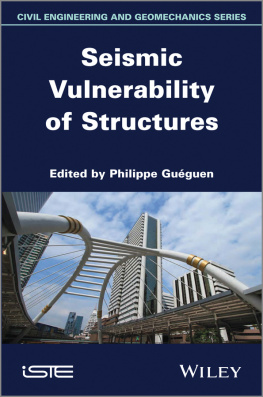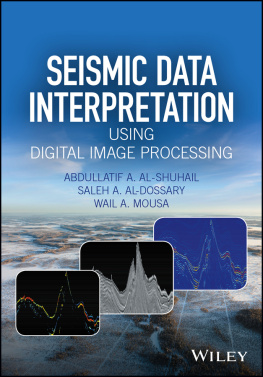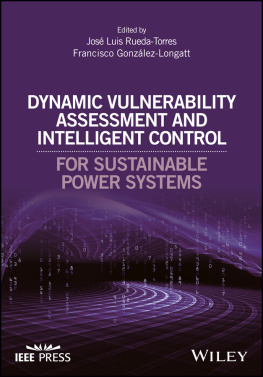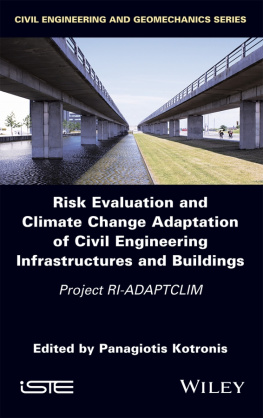

First published 2013 in Great Britain and the United States by ISTE Ltd and John Wiley & Sons, Inc.
Apart from any fair dealing for the purposes of research or private study, or criticism or review, as permitted under the Copyright, Designs and Patents Act 1988, this publication may only be reproduced, stored or transmitted, in any form or by any means, with the prior permission in writing of the publishers, or in the case of reprographic reproduction in accordance with the terms and licenses issued by the CLA. Enquiries concerning reproduction outside these terms should be sent to the publishers at the undermentioned address:
ISTE Ltd
27-37 St Georges Road
London SW19 4EU
UK
www.iste.co.uk
John Wiley & Sons, Inc
111 River Street
Hoboken, NJ 07030
USA
www.wiley.com
ISTE Ltd 2013
The rights of Philippe Gueguen to be identified as the author of this work have been asserted by him in accordance with the Copyright, Designs and Patents Act 1988.
Library of Congress Control Number: 2012955533
British Library Cataloguing-in-Publication Data
A CIP record for this book is available from the British Library
ISBN: 978-1-84821-524-5

Introduction
Earthquakes are one of the natural phenomena that, for a long time, has significantly affected the imagination of human beings. Indeed, earthquakes are sharp and sudden, and in a few moments the victims can be counted in thousands. They bore an even more mysterious character as they would undermine the innate beliefs of man in an unmoving Earth. Even if the physical origins of earthquakes are better understood today, the power of their vibrations is still sometimes astonishing. Those who have experienced a moderate or strong earthquake in a reinforced concrete building are frightened by the ease with which the walls and floors oscillate; this disturbs the faith of modern man in the robustness of the constructions of reinforced concrete.
No other natural forces can cause, in such a short time span, as much damage and lead to as many victims as earthquakes do. In the most recent catastophic examples, such as Kobe (Japan, 1995, M = 7.3), Izmit (Turkey, 1999, M = 7.6), Boumerds (Algeria, 2003 M = 6.7), Kashmir (Pakistan, 2005, M = 7.6), Sichuan (China, 2008, M = 7.9) and even Haiti (Haiti, 2010, M = 7.0), earthquakes demonstrate the weakness of urban environments relative to the destructive power of these events. Wherever we are, the same observations are made: the weaker buildings suffer a lot of damage, the old constructions made up of earth or masonry resist the least, schools often greatly suffer from the ground vibrations, the zones of destruction are very scattered without any clear geographic distribution and populations are often taken by surprise. However, there is a hidden logic behind these general and repetitive observations, which if better understood and controlled, could allow us to reduce the impact of these earthquakes on urban areas.
Already, in his lifetime, Rousseau had spotted the urban incoherence of Lisbon in 1755 by explaining that if we hadnt gathered here the twenty thousand houses of six to seven storys and if the inhabitants of the large city had been more evenly spread, and not as heavily burdened, the damage would have been much smaller, and maybe absent. With this sentence, Rousseau sums up all the observations made since the Lisbon earthquake, for each event. He clearly expresses the anthropism of all hazards that are said to be natural. Avoiding an excessive rousseauization that would make man bear the responsibility for all natural disasters, we observe a strong link between the phenomenon, the action of man and the disaster; this is the classic relationship with which every presentation addressing the notions of risk, hazard and vulnerability generally begins: R = H.V.E, a definition of which was given on the occasion of the International Decade for Natural Disaster Reduction [DIP 92].
In the above formula:
R represents the risk, in other words the mathematical expectation of loss in human lives, injuries, damage to goods and effects on the economic activity during a reference period and in a given area, for a particular hazard.
H is the hazard, the threatening event or the probability of occurrence in a region and during a given period, of a phenomenon capable of causing damage.
V represents the vulnerability that we represent in degrees of loss (from 0% to 100%) of an element at risk resulting from a phenomenon susceptible of causing casualties and material damage.
E represents the elements exposed or the elements at risk, or the Population, the civil engineering constructions and structures, the economic activities, the public services and infrastructures, etc., exposed to a hazard.
We could debate these definitions and their outlines, according to whether we take sides with the seismologist, the engineer or the sociologist. However, Coburn and Spence [COB 02] remind us that over the last century, the cost of earthquakes, in terms of values in the year 2000, is in the order of a thousand billion dollars. Calculated per year, they observed that this value increased during the 20th Century, essentially due to the increase in and concentration of populations in large urban areas exposed to a strong seismic hazard.
Indeed, over the last century, the hazard or even the number of earthquakes per year has neither increased nor decreased. Only the vulnerability of environments has varied. Approximately 50,000 earthquakes occur on average per year, as a result of the motion of the Earths tectonic plates. Of these 50,000 events, a few are of potentially devastating magnitude. Despite the improvement of our knowledge since the confirmation of the motion of tectonic plates suggested in 1912 by Wegener and confirmed by Hess [HES 62] and Dietz [DIE 61], it is still impossible to know exactly where and when the next large earthquakes will occur. However, what we are aware of is the huge increase in urban population size situated along the active seismic faults, which increases the probability that the future disasters will go beyond that of San Francisco or Tokyo. Considering the time between occurrences of the largest earthquakes, Jackson [JAC 06] affirms that larger seismic catastrophes are yet to come, and there are hardly any urban zones which in their present configuration that have suffered from these major events. Not only the number of people exposed to high seismic hazard is higher than ever before, but also the concentration of the wealth and modern infrastructure in the megacities could lead to infinitely more devastating effects in economic terms than the Kobe earthquake in 1995, which caused $100 billion in loss, making it one of the most costly natural hazards of all time.
Regarding natural disasters, the year 2011 will have been perhaps for companies most costly in modern history. For the reassurance companies Munich Re and Swiss Re, the economic losses linked to tectonic hazards, including tsunamis and earthquakes, could reach 276300 billion for that year. It was a record, which was amplified by the fact that they do not take into account the costs induced by industrial catastrophes such as Fukushima and, which could have been higher if Japan had been better insured against earthquakes. Indeed, the Japan earthquake contributed largely to this number, this mega-event having an unreal aspect to it. Nevertheless, the New Zealand disaster, more modest (M = 6.3), which devastated Christchurch, also adds to the sum, raising the losses up to 13 billion of, which, 10 billion were covered by insurance.
Next page









